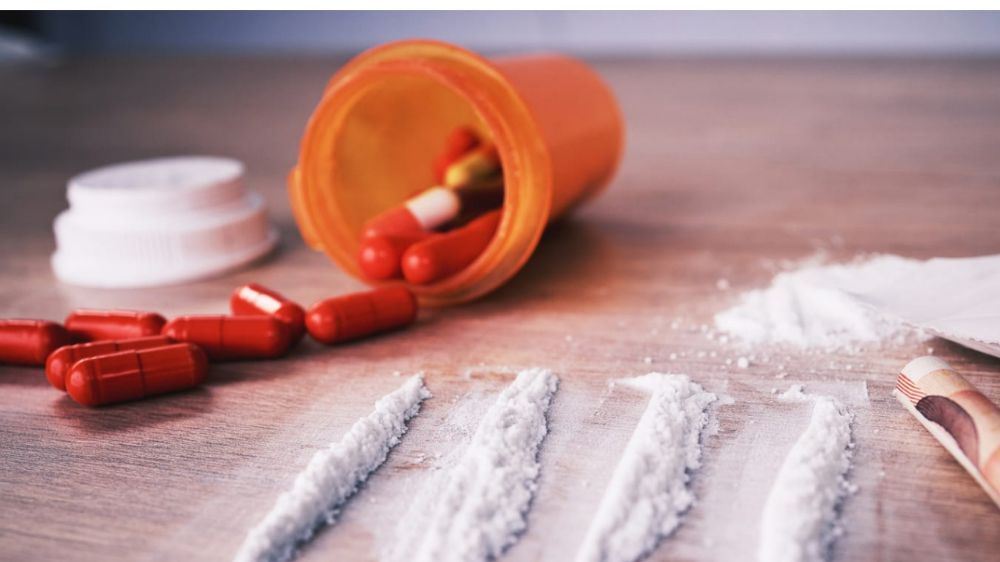Why the plan to sell tested hard drugs in honor of his dead brother failed

Amidst the buzz generated by the recent decriminalization of the use of small amounts of drugs in the Canadian province of British Columbia, the story of Jerry Martin seems the most fascinating.
The 51-year-old, who claimed to be inspired to end the use of tainted drugs that have killed many drug users, including his brother, who died of an overdose, opened a mobile drug store intending to sell safe tested drugs.
Although drug abuse was a problem in BC, the primary concern was the proliferation of fentanyl-laced drugs, a cheap and synthetic opioid, leading to severe health damage and death.
This was part of the problems Martin's drug store promised to solve. He said that his drug store would offer a clean supply of cocaine, heroin, methamphetamine, crack cocaine, and MDMA up to 2.5 grams, claiming all the drugs would be tested for fentanyl at Get Your Drugs Tested, a free public drug checking service in Vancouver.
Martin told news outlets that his "noble cause" was not only about supplying clean drugs but also educating his buyers about the dangers of drug use, providing shelter and food, and guiding them to local resources within the neighborhood to support their recovery journey.
His new and daring idea caused a media frenzy. He also attracted the attention of the government, who responded by shutting down his store in less than 24 hours of operation, stating that decriminalizing small quantities of hard drugs does not permit drug trafficking.
However, his story gets even more fascinating. In an unfortunate turn of events, Martin's family announced his sudden death three months after opening his controversial drug store.
But that was not only the problem. Martin died of a drug overdose, and fentanyl, the major substance his drug store was trying to prevent people from consuming, was found in his system.
Martin had been struggling with drug abuse. Reports say he had spent 15 years on the street and getting sober from hard drugs.
However, he failed to address his personal battle with the same demon he was trying to rescue others from at the time that his store launched. The irony is that the hero fighting for the rights of drug abusers happened to be a helpless man drowning in his own problem.
It turned out that Martin was dishonest about both his mission and his drug addiction. His intention may not have been to help the government reduce the death rate by drug abuse or help the people.
A more likely scenario is that this store was a way to earn a steady income through the drug trade and possibly a way to be in control of his access to drugs.
Does having a clean drug supply fix the drug addiction problem?
Providing access to clean hard drugs didn’t fix the problem because the problem is addiction.
The Canadian province of British Columbia has been battling rising cases of drug abuse and the increasing death rate caused by it for years. In 2016, the province declared a public health emergency over the opioid and tainted drug crisis.
In 2022, the province witnessed a staggering death toll of 2,272 individuals from toxic drugs alone, accounting for the highest among other causes of death.
One of the solutions proposed by the House of Commons was a safe supply, which allows the supply of clean drugs. However, considering what happened to Martin, is that the best solution? Other questions this proposed solution raises are, would the government be able to maintain the supply of drugs? Will it not inadvertently enable drug use?
One of the problems a safe supply of drugs can cause is to enable or encourage drug use. This is because the policy reduces the punishment and consequences of drug addiction and abuse. Addicts may perceive the government's backing of distributing controlled substances as a license to engage more in it.
Thoroughly testing the drug supply will not end the opioid crisis.
While having a safe supply can reduce harm for those who already have a drug dependency, it does not address prevention, early intervention, or long-term recovery support.
What’s next?
Since having a safe drug supply does not address the core issues driving addiction nor help addicts, what should we focus on? More awareness and education. Individuals, non-profit organizations, and the government have invested significant resources to promote education and awareness about drug addiction and its impact. However, there's still room to do more. More young people are exposed to the wrong information about drugs in schools, their environment, and especially on the internet. There must be strategic plans to invade the social media space with information on drug abuse prevention, risk, and available support services.
Long-term supportive rehabilitation programs to help drug addicts overcome addiction should be implemented in communities plagued by this menace.
Finally, everyone must unite, identify drug addiction as a common enemy and fight it head-on.Ak
David Akeju is a writer based in Nigeria. Follow David on twitter.

